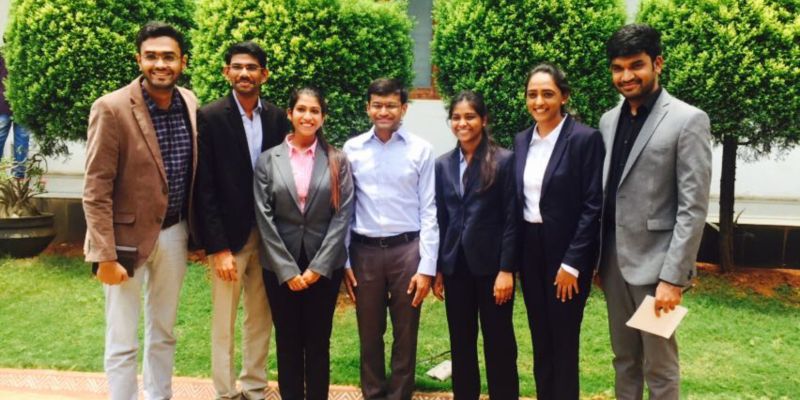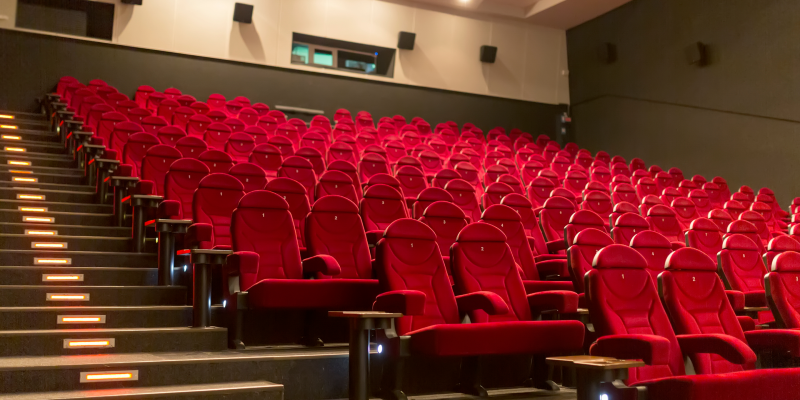YS Exclusive: After redBus, Phanindra Sama on a journey to build the new India story in Telangana
Phanindra Sama, Co-founder, redBus, and now CIO of Telangana State Innovation Cell (TSIC), talks on how he transitioned to Chief Innovation Officer of Telangana, and his plans for India’s newest state.
Much before the Flipkart-Walmart deal made headlines, the acquisition of redBus by Goibibo was one of the earliest successful exit stories in the Indian startup ecosystem. The tale is well chronicled.
Since his exit, Co-founder Phanindra (Phani) Sama has been doing different things. Now as the Chief Innovation Officer of Telangana State Innovation Cell, Phani, in an exclusive conversation with YourStory, says,
“I had decided to take a forced five-year break from starting up. There were many ideas that would keep cropping up, but I felt there was a need to take that break and do different things.”
From studying economics and psychology at Stanford to getting a fellowship in London, from working on the Nizamabad Sandbox to being an angel investor, Phani has done everything that could possibly be on one’s bucket list.

In an interview with YourStory, Phani speaks about his journey to becoming the CIO of Telangana State Innovation Cell.
YourStory: The redBus journey is well known. From entrepreneur to investor and now CIO, can you tell us about the trajectory of your journey?
Phanindra Sama: For me, entrepreneurship was accidental. When I started out in 2005-06, there was no word like entrepreneurship or startup. I missed a bus, and it was about being a creative problem solver.
We started as a non-profit, open-source solution. The idea was to create the platform and welcome the coding community to further build it and keep it free for bus operators. We felt it would benefit us all. We got version 1.0 out and took it to bus operators. But they simply weren’t using the platform. It was a different era; YouTube was the new “cool” thing. From there we went to TiE and got an advisory board and mentors.
We diligently followed their advice because we had just migrated to Bengaluru and didn’t know anybody and didn’t know anything about startups or businesses. It was then that redBus became a for-profit business. After that, the journey has been about me pushing myself to take a break and do different things.

YS: Why take a forced break, especially when ideas kept coming to you?
PS: I believe the mind needs that break. I think innovation or something new happens at the intersection of two different things. For example, I was an engineer and missed a bus, and so redBus happened. The chances of redBus being built are slight had I been a doctor and missed a bus.
We always have resistance to try new things. I wanted to expose myself to different things before getting back in. To do anything and become successful needs 15 years. This is going by the logic of 10,000 hours to master something; this roughly translates to 10 years.
I was in my early 30s after redBus and felt my break would be at 55. It made no sense. Now with this break, I can start even at 40. But I have been a part of the startup ecosystem because I owe the ecosystem a lot.
YS: How has the startup ecosystem evolved and grown since redBus?
PS: Startups were once restricted to ecommerce and websites; today startups mean so much more. Innovation today has moved far and beyond, across different sectors. People are willing to take risks and try different things.
Today, SaaS is a big play, product innovation is at its cusp and is growing. Though I come from consumer internet, more than 60 percent of my investments are from SaaS.
YS: How was it going back to school?
PS: Oh yes! In these last few years, I went back to school, wrote exams, studied again. It was an amazing experience! I have never studied abroad. My first college abroad was Stanford.
For someone to become a professor at Stanford, you need to have two to three decades of experience, where you keep discovering something new and different. I did economics, psychology, and theatre. I went to Sweden to do a fellowship in environmental studies because it is something I am passionate about.
The way it is taught is so different. We had to write down our hypothesis in the first class, and through the course of the semester, we had to either prove or disprove that hypothesis, in parallel to classroom discussions.
That is the way the subject was taught. It pushes you to think differently, explore, and investigate deeper. Any questions are encouraged and pushed. It is different from what you’re used to.
I have been a state ranker, and have a distinction from BITS Pilani, and yet there were so many things about studying itself I didn’t know.
YS: How did you transition to a role like this?
PS: It actually is all thanks to Minister KT Rama Rao. He had come to Bengaluru and called me for a meeting. His pitch was you’re from Telangana, and if you’re starting up again, you should do it there.
All through my seven to eight years of building a company, I hadn’t met an IT minister. And when I wasn’t doing anything an IT Minister calls not only the large companies but even the smaller ones, and someone like me, I found it impressive.
I told him I was on a break. This was around 2014. We nevertheless kept meeting on and off. And he kept on asking me that if you aren’t doing a startup, do something for the state.
At that point in time, I was in London on a fellowship. And I did feel I needed to do something for the country. But it felt very impractical, because I have my life set in Bengaluru, with my family here. I was already contributing to society with the Nizamabad Sandbox and it was taking a lot of my bandwidth.
I thought about it for several months. But the minister was persuasive. He finally got me to his house and explained his vision and plan for over one-and-a-half hours. He was saying all the right things, and I just couldn’t say no.
YS: What are your roles and responsibilities as TSIC CIO?
PS: The belief is that economies go through three phases - one they live of natural resources, next is through industrial efficiencies, and finally innovation. Most developed nations are innovation-driven, while many others are economies that live off natural resources.
The Telangana government believes we can leap-frog into an innovation-driven economy. That will happen when people take ownership of innovation and it becomes coffee table conversation.
My role is to get the conversation started on the importance of innovation and get people moving in that direction. We have a broad charter and it isn’t measurable unlike what I have done most of my life. This is working with the community, and there isn’t an end goal – when innovation will become everyday conversation is unknown.
We are figuring out what needs to be done. I am taking ideas from everyone. Startups are a part of the charter. An idea given by the IT Secretary Jayesh Ranjan is that look at a city as a whole approach.
There are currently 40 incubators in the city, but they need to collaborate to grow faster. It is one thing we are looking. We have been meeting incubators across the city and each one takes initiative. This we are doing across different verticals, where we bring stakeholders of the ecosystem and verticals together to meet, have conversations, share ideas, and collaborate.
We are also looking to create a strong mentor ecosystem; we are also working with rural innovators. There are so many inspirational stories of rural innovators; they will make a huge impact. We need to celebrate their stories more than stories of people like us.

YS: Tell us about the Kakatiya Sandbox in Nizamabad.
PS: Raju Reddy (Founder, Sierra Atlantic) wanted to do something for Nizamabad and had told me I could join him. Most people know Raju as one of my earliest mentors and board members at redBus, but we share one more common ground - our hometown Nizamabad.
It was a golden opportunity for me. At many startup events, I would meet social entrepreneurs and be super inspired by what they would do. With this invitation from Raju, I just knew I had do it.
We have interacted with many non-profit organisations and liked the work of the Deshpande Foundation. They have followed a bottom-up model for development, which includes a great deal of participation from communities. The idea is to use the principle of entrepreneurship to address social issues.
YS: What sets the Hyderabad and Telangana startup ecosystems apart?
PS: Hyderabad has the highest density of top-notch colleges, with IIIT, IIT Hyderabad, ISB, University of Hyderabad, BITS Pilani, and NALSAR. There are also some great central government research organisations.
One-third of Telangana is government land so it can be easily given to set up labs and central government institutes. What we need to push is an output and get in a stronger density of companies.
But when I met companies in the first week, they have the same characteristics as redBus; the only difference is the companies are bootstrapped. They are that large and bootstrapped. Maybe we are the bootstrapped capital of India.
Unfortunately, there is no mafia or companies that have come out of these companies. There is a redBus Mafia, a Flipkart Mafia, Freecharge Mafia; we need something like that here.
This doesn’t help the ecosystem. Each of the larger companies should give birth to 30 more companies; that will create a vibrant ecosystem. We need one big ingredient - a strong mix of a mentorship network of people who have built large companies and old traditional businesses. At TSIC, we are working to bring in that round of collaboration.
YS: What would you say is the one drawback of India’s startup ecosystem?
PS: One drawback is we don’t know sales. We aren’t taught how to sell. Even in MBA schools, marketing is taught, but selling isn’t taught. Many startups today have great products because we can build and are taught that. But we are losing out because we can’t sell.
YS: So, is it going to be Bengaluru vs Hyderabad in the startup ecosystem?
PS: I don’t think we need a Bengaluru vs Hyderabad. What we need is collaboration between the two ecosystems. Collaborations always work brilliantly and help you grow. Bengaluru has, over the years, already built a strong ecosystem of old business, first-time entrepreneurs, and big names. The idea is to work together and bring a change.
We don’t need one large ecosystem; we need several different and large ecosystems for startups to thrive in India.







